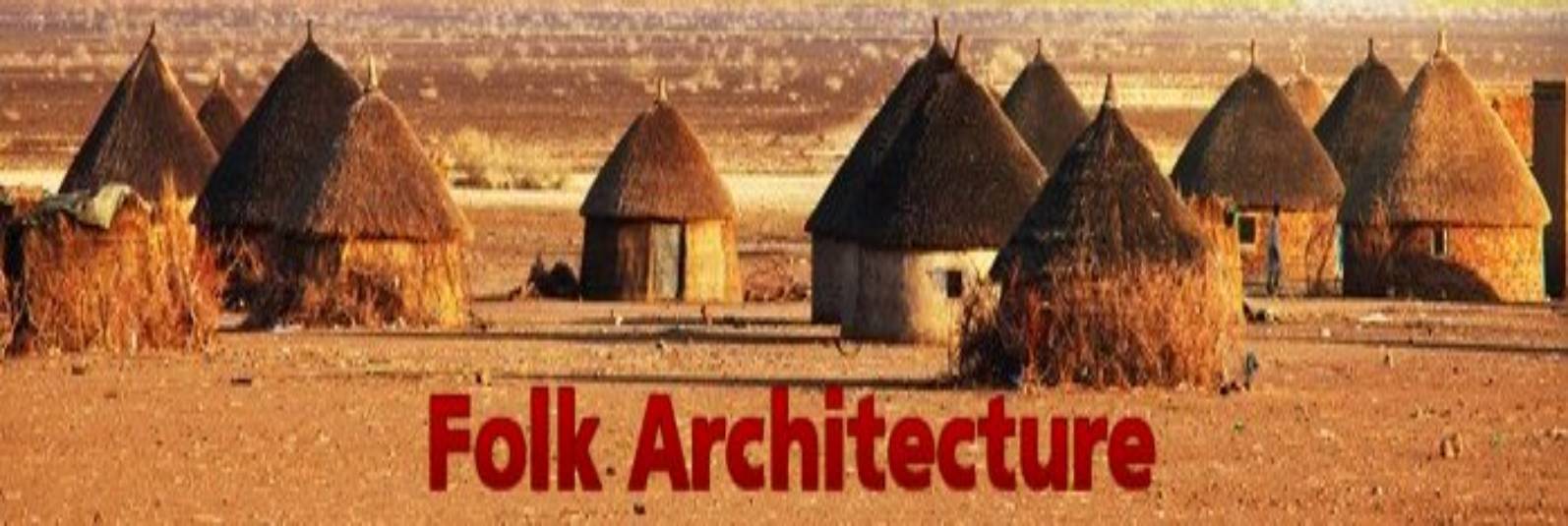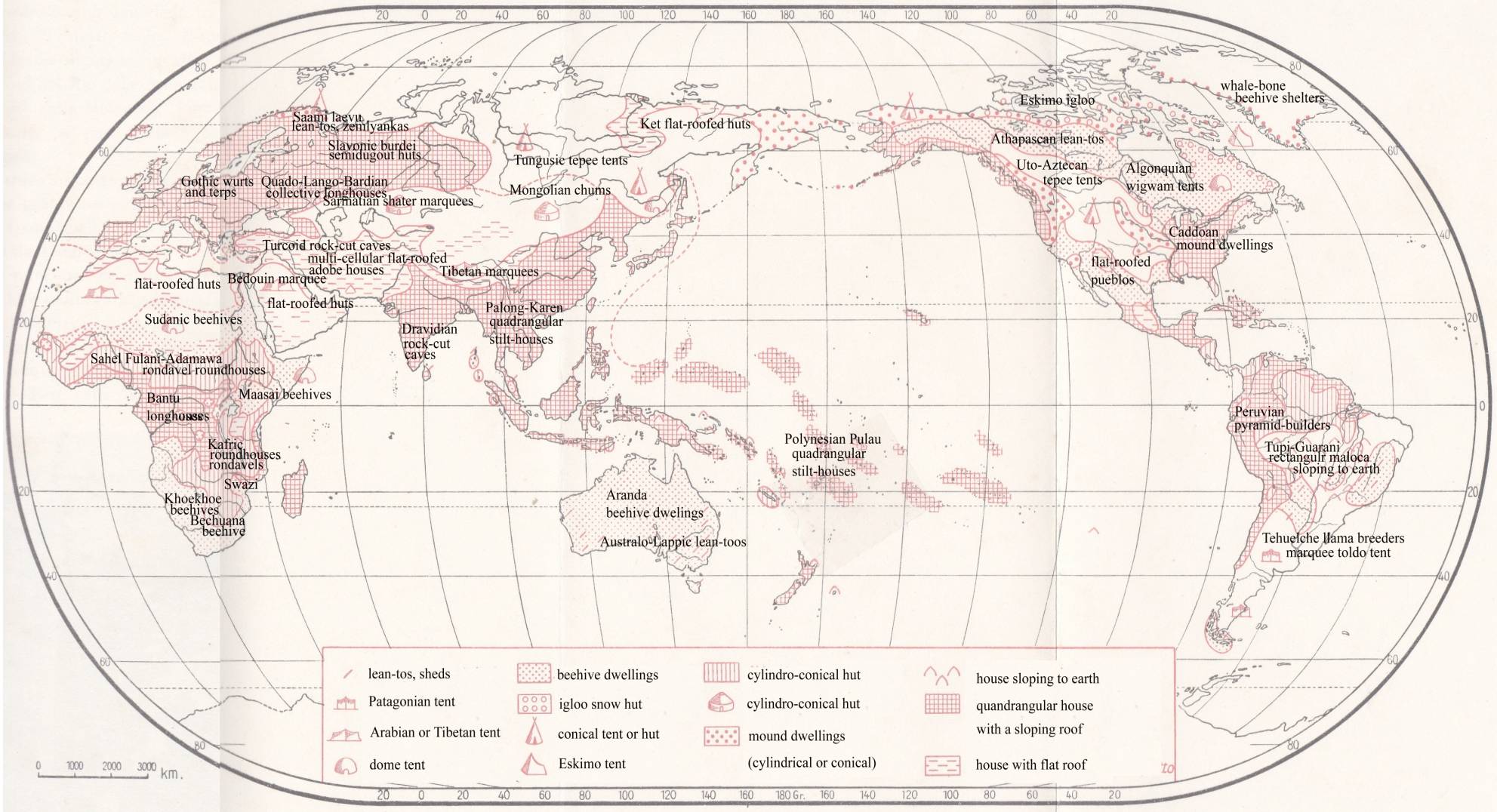|
|
|
||||||||||
|
|
|
||||||||||
|
|
|
|
|||||||||
|
|
|
|
|||||||||
|
|
|
|
|||||||||
|
|
|
||||||||||
|
|
|
||||||||||
|
|
The Ancient Indigenous Architecture of Microlithic TribesClickable terms are red on the yellow background |
|
|
||||||||
|
Map 1. Types of human dwellings (after R.
Biasutti) |
||||
|
|
||||
GENERAL ARCHITECTONICS
|
FOLK ARCHITECTURE § Cliff-Dwellings and Burial Rock-Cut Caves
§ Rectangular
Longhouses Out of Straw and Mud
§
Earth
lodges and Subterranean Sancturaries § Semidugout Zemlyankas of Lapponoid Cremators
|
TYPES OF DWELLINGS
§
Tungusoid teepes,
pile-huts and lake-dwellings
§ Pelasgoid conical rondavel roundhouses§
Megara, palatial
temples and columnal palaces
§
Flat-roofed
labyrinth architecture of Oriental farmers
§
Rectangular wicker longhouses with
thatched roofs
§
Gotho-Frisian
wurts, terps and half-timber longhouses
§
Dome-shaped beehive huts
§
Irregular
multi-peaked marquee nomadic tents
·
Epi-Aurignacian
tepees and pile-dwellings
·
Bascoid Cyclopean megalithic
architecture
·
Megalithic
tombstones and tholoi graves
·
Lapponoids’ lean-to and semidugout pit-house
·
Turcoid dwellings
and burials in rockcut caves
|
ANCIENT SETTLEMENTS §
Lakeland,
marshland, lowland, grassland and desert ecosystems §
Multicellular
labyrinths in arid subtropical lowland §
Tell-sites
in oases of subtropical shrublands §
Multicellular
labyrinths in arid subtropical lowland §
Tell-sites in
oases of subtropical shrublands §
Oppidans:
hillforts towering on high rock promontories §
Getic boroughs:
villages in alluvial lowlands §
Palatial poleis
and cultic spas in seaside harbours §
Straight streets
and alleys of lake-dwellings |
|
Cliff-Dwellings and Burial Rock-Cut Caves
Argillae. The Cimmerian cliff-dwellings were dugouts and
souterrains cut into cliffs. They appeared in misty regions veiled in gloomy
clouds and dense fog where the sun never shone and never showed its face.
Ephoros, himself a native from Cyme in Asia Minor, attributed Cumae in
Italy to the Cimmerians. He explained that their permanent homes were in
rock-cut subterraneans called argillae. In deep subterranean caves
they had oracles and priests who never saw the sun and were allowed to go out
only at night. They drank water from a well at the bottom of their
subterranean temple. They believed that it was linked with the Styx and
sprang from mineral springs (Strabo IV, 4, 5). Argil(l)a
probably corresponds to the Rumanian expression argea ‘hut’ and Albanian ragál ‘hut’
(Georgiev 1985: 5; 1977: 11). Geryon’s caves. According to
the Old Irish chronicle Lebar Gebàla, the earliest inhabitants
of Ireland were called fomoire. They lived in submarine crags and
caves on ragged cliffs towering like glass castles over the sea. The
description of their vertical rock-cut towers reminds us of Geryon’s
submarine caves mentioned by Greek myths. Geryon was another hero of
Iapethos’ progeny, he was Typhon’s son and Chimaira’s brother. He inhabited submarine crags
that were accessible only through the
entrances submerged in the water. In these caves Cimmerians deposed the bones of their
forefathers and their warriors met to practice chthonic cults with feasts on
human victims. Strabo gives a vivid description of the
subterranean caves called argillae used by the Cimbri at Cumae
in Italy. They were dug in rocks as vertical towers and at their bottom there
was a sacred well where visitors threw gold coins. Cave-dwellings were
characteristic also of the Kelteminar culture (4,000 BC) east of the Caspian
Sea. Their inhabitants were people of Turkic stock. Gebru. Near
Teheran and in Yezd and Kerman there is a group of cliff-dwellings in rocks
which may be attributed to the Gebru, a tribe of Zoroastrists, who preserved
this creed and habitation up to the 19th century. Zoroastrism was made an official religion by the Achaemenids,
who seized the rule in 522 BC. The Achaemenid rulers Dareios I, Dareios II,
Xerxes and Artaxerxes and constructed monumental rock tombs cut in the rock.
The Persian cave tombs have rich reliefs, columns and rock carvings. The
kings wear long hanging beards and Median tiara-shaped crowns. Similar
tombs were built by Russ I, King of Urartu. Phrygia, Urarte and Media were
three large centres of rock-cut funeral architecture. The origin of the
Achaemenid may be associated with the Tajik, Tat and Talysh.
V. V. Bartol’d (1925) linked the Tajiks with the Moslem tribe Tazi
of the 10th century AD and an earlier Arabic group Tai. They were
highlanders living in terrace houses (kishlaks) cut into steep rocks.
Their flat roofs were levelled with the ground and their inner rooms had numerous
niches. Their tombs were mostly cellars with niches and mounds (gūri
laxad). Ossuaries. The
architecture of artificial caverns in Palestine originated in the Neolithic
and its builders were the Jews and Phoenicians. The dead corpses in rock-cut
caves lay on elevated benches or in niches. Later they were placed in sacrophagi
out of stone, wood or clay (larnaces). Most corridors were sloping
down like shafts. The cave ossuaries with larnaces are usually
attributed to the Philistines, forefathers of Palestinians. The expansion of
burial caves to Punic Carthage was probably due to the Phoenician sailors. Scarab. The Phoenician rock-cut
graves contained sealing-sticks with the symbol of scarabs (Scarabaeus).
This beetle was a sign of the scarab god Cheprew and the sun god Amon
whose cult was introduced with rock-cut graves by the priests and pharaohs of
the Eighteenth Dynasty. Tutankhamen had several scarab amulets on his neck.
Amenhotep III edited memorial scarab gems on jubilee occasions. Large gems
contained a text from the 30th chapter of the Book of the Dead. They were
called ‘heart scarabs’ since they had to replace the heart after a mummy was
embalmed and deprived of bowels. The stone graves were cut into the limestone rocks in the
Valley of the Kings (Bībān el-mulūk) in the Upper
Egypt. This necropolis was founded by Amenhotep I, the first of Weset
kings. The military power of this dynasty rested on the title of kings of
Nubia. This dynasty kept regular marriage contacts with the Mitanni
and exhibited a Persian influence in the decorative entrances and columns in
front of the tombs. The tomb of Ramesses II is decorated by four statues of
the king depicting him with a high tiara or fez which was formerly typical of the Mitanni.
Table 1. Dwellings and burials in rock-cut
caves
Capsians. The Capsian
culture in North Africa (-8000) belonged to nomads who practised
mummification and used ostrich eggshells as vessels. Capsian caves exhibited
many rock drawings and cave paintings. The Guanches in Teneriffe prepared
real mummies and deposited them in large caverns. These caverns served as
ossuaries but also as shelters before enemies. The mummies were not wrapped
but stood naked as columns along corridors and galleries. A large centre of
artificial caverns is found in the Seine-Oise-Marne region. These caves cut
into a meek limestone composed of narrow entrances, sloping passages and
large ante-chambers. At the estuary of the Tago in Portugal they were cut
into cliffs. Within the range of the Greek world they were discovered in
Cyprus (-3000 to -2400), on the Cycladic Islands, in Attica, Euboia and on
Crete. R. Whitehouse’ paper The rock-cut tombs of the Central
Mediterranean proved their structural analogies with chamber-graves in
Britain (D. and R. Whitehouse 1975:
94). (Extract from
Pavel Bělíček: Prehistoric Dialects
II. Prague 2004, p. 546-549) |
Architectural
Taxonomy An alternative model of architectonic
classification may be submitted to consideration in Table 2. Its disadvantage
is seen in too many neologisms, great complexity and divergence from standard
conventions. Its specific trait consists in applying local terms as
archetypes for entire classes of similar buildings. If it displays a positive
feature worth pursuing, it is a series of compound words ending in -tectonic.
It indicates that the actual reference cocerns the systematic typology of
constructions in popular huts and folk architecture. They show that folk
architecture builds a bridge over the wide abyss between Palaeolithic and
Eneolithic morphology and disclose their structural continuity from times
immemorial.
|
|||
2 H. A. Bernartzik: Die
neue grosse Völkerkunde. Wien – Prag 1962.


























